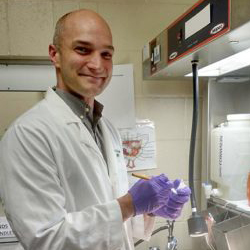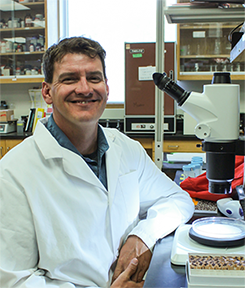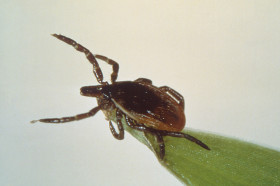 Sharane Dorrah is on a mission … A passionate hiker, mountain biker, skier, and general outdoors enthusiast who suffered years of debilitating illness due to the unfortunate bite of a Lyme-infected tick, Sharane is determined to ensure that the rest of the world avoid her nightmare through greater awareness and protection.
Sharane Dorrah is on a mission … A passionate hiker, mountain biker, skier, and general outdoors enthusiast who suffered years of debilitating illness due to the unfortunate bite of a Lyme-infected tick, Sharane is determined to ensure that the rest of the world avoid her nightmare through greater awareness and protection.
The company she launched this past year, Peskys, offers fashionable performance activewear instilled with an EPA-approved insect repellent to ward off a wide range of “pesky” bugs that can carry serious diseases. Sharane explains, “Sounds dramatic, I know… [but] I’m on a mission to save lives by giving a fashionable option for protection against bites from those pesky bugs that can carry not only Lyme, but also Zika, West Nile, and all those other ‘bug diseases.’ I’m opening my big mouth and creating awareness. And I’m donating protective clothing and other items to children because they are the most at risk for some of these diseases.”
Sharane’s tactics are intriguing. Certainly the spread and the number of serious diseases like Lyme, Zika, and West Nile have forced the issue into the minds of more people; and yet, apprehension or lack of enthusiasm about the preventive tools available — such as chemical sprays, seemingly excessive coverup or avoidance tactics, etc. — mean that far too many of us who love the outdoors remain at risk. Enter this new concept: “performance apparel reinvented into sophisticated style options that meet the demands of day-to-day urban and outdoor active living. Pesky’s insect repellent apparel options perform equally well on the hiking trail as they do pool-side, at the farmer’s market, or in the backyard. They’ll ward off the worst of the season’s mosquitoes and ticks, but they do it without sacrificing style.”
 Bay Area Lyme
Bay Area Lyme Dr. Chase Beisel is an Assistant Professor at
Dr. Chase Beisel is an Assistant Professor at  Wednesday evening September 14th, Jordan Fisher Smith, Lyme patient, former National Park Service (NPS) ranger and US Forest Service firefighter, narrator of the Lyme documentary
Wednesday evening September 14th, Jordan Fisher Smith, Lyme patient, former National Park Service (NPS) ranger and US Forest Service firefighter, narrator of the Lyme documentary  Just six months ago, Bay Area Lyme launched a
Just six months ago, Bay Area Lyme launched a  The following is a post from a guest author,
The following is a post from a guest author, 